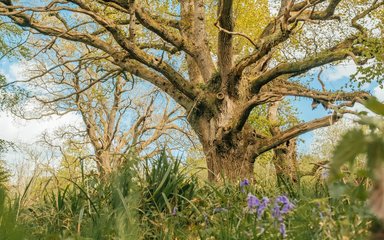
National Nature Reserves (NNRs) exist to protect some of the country’s most important habitats, species and geology. As vital places for nature conservation, NNRs are designated by Natural England and have legal protection. Alongside serving as places for scientific research, they are also amazing spaces to visit and experience wildlife. Find out more about the National Nature Reserves we look after, including where they are and how we care for them.

Looking after National Nature Reserves
Working with partners and neighbouring landowners, we manage a delicate balance between allowing visitors to enjoy the wildlife and the landscape, while also protecting and improving the habitats in our care.
Help protect these special places
When visiting NNRs, please make sure you stick to main paths, keep dogs with you using a lead, and follow any signage onsite. These all help to avoid disturbing wildlife or damaging habitats, so we can all enjoy these beautiful spaces for years to come.
Forestry England National Nature Reserves
The NNRs in our care cover 10,000 hectares across the nation's forests. From peat bogs to ancient woodlands, we help protect a huge range of wildlife and habitats.
Bardney Limewoods
This groups of ancient woods in Lincolnshire are home to some of Britain’s most important small-leaved lime woodland, including Chambers Farm Wood.
Bedford Purlieus
This ancient woodland in Cambridgeshire has areas of coppice home to dormice and full of history, including Roman archaeology. It was our most diverse site for both fungi and invertebrates during a recent eDNA survey.
Flashes of Wigan and Leigh
This NNR in Lancashire includes an expanse of important former coal mines. Viridor Wood forms part of this reserve, and features a mix of woodland, grassland and lakes.
Kielder Mires and Kielderhead
Both part of Kielder Forest in Northumberland, Kielder Mires is home to the largest and most important collection on peat bogs in England (known as the Border Mires), whilst Kielderhead is an important area of moorland home to rare upland birds.
Wild Ennerdale
One of our newest NNRs and one of the longest-running rewilding projects in the country, this diverse and varied landscape of mountain, river and forest at Ennerdale in Cumbria supports some of our most unique and precious wildlife.
Lady Park Wood
Straddling the borders of England and Wales and within the Forest of Dean, this ancient woodland reserve was set up in 1945 to study how natural woodlands develop, comparing managed and unmanaged areas.
Purbeck Heaths
This 'super' National Nature Reserve in Dorset is the largest lowland heathland reserve in the country and important for rare reptiles, such as sand lizards. It includes Rempstone Forest.
Sherwood Forest
The Birklands, in Nottinghamshire, are part of this historic and well-known area, where we look after one of the highest concentrations of ancient oak trees over 500 years old in Europe.
Whitbarrow
Whitbarrow in Cumbria, within the Lake District, is an important woodland for geology with limestone pavement and the unusual plants that take root in the rock.
Wyre Forest
In partnership with Natural England, we manage the largest ancient woodland NNR in England. Wyre Forest in Worcestershire is home to ancient oaks, rare butterflies and breeding birds.



